Like a figment of a child’s imagination, these curious islands have more than a dash of Middle Earth to them, home to mountains of myth, hamlets steeped in Viking lore, hobbit-like turf-roofed houses and shaggy sheep that outnumber people at least 2:1.
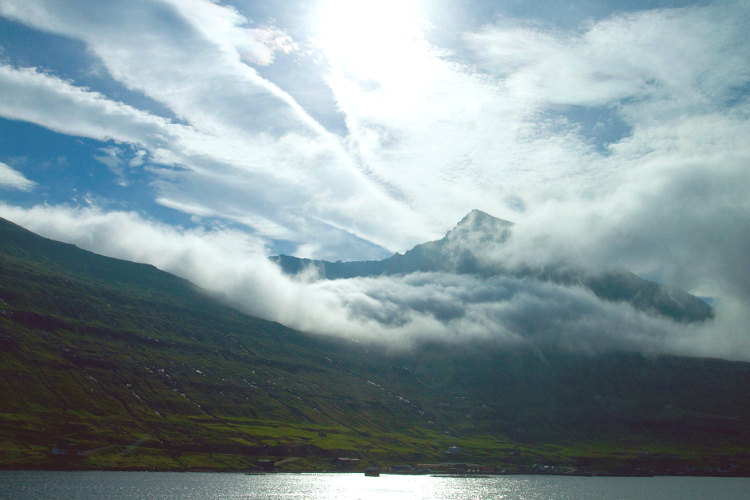
A delicate fretwork of shimmering fjords, layer-cake peaks, vertical cliffs and sweeping, vibrantly green valleys, often wreathed in spectral folds of mist, the Faroes are one Europe’s last great wildernesses – gloriously remote, yet just a two-and-a-half hour flight from the UK.
Dipping into the North Atlantic like a finger, Kalsoy is nicknamed ‘the flute’ because of its long, slender shape and the tunnels that burrow through it to accommodate the road, which make every drive here an adventure. Rugged and drenched in every shade of green imaginable, this is one of the most dramatic and enigmatic of the northern chain of islands.
There’s no better way to appreciate the full-on natural splendour of this island than on the circular hike to Kallur lighthouse, which looks as though the slightest puff of breath would blow it off the cliff face. The 1.6km (45-minute) ascent leads gently up over tussocky, sheep-grazed land, where you should bear right (east) of the 537m peak of Borgarin. On fog-free days, you are rewarded with views that are simply out of this world, which embrace five islands and the mighty rock stacks of Risin and Kellingin. The razorback peaks that run from north to south along the island’s spine resemble a dragon’s backbone from this high vantage point.
A hike can easily be tied in with a visit to the streamside hamlet of Mikladalur, a quaint jumble of black-tarred, turfed-roofed houses. One of the Faroes greatest legends was born here, that of the beautiful seal-woman who had her skin stolen by a love-struck farmer and was enslaved as his wife - she later managed to retrieve her skin and escape back to the sea.
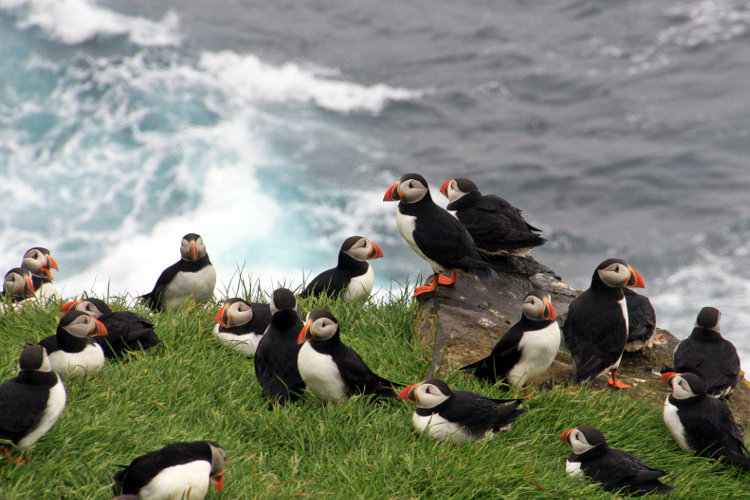
Ah, who doesn’t love a puffin? If close encounters with these comically cute, white-breasted birds top your Faroe Islands’ wish list, there’s no place like Mykines. Even the Faroese have a soft spot for the wild heights and ragged, wave-lashed coastline of their westernmost island, which is a petite 10 sq km. While the island is home to just 14 people, its end-of-the-world remoteness draws migratory seabirds in their thousands, who flock here in the summer months to hatch and rear their young, with puffin fledging time peaking in August. The western point of Lambi is where to spot them, but take care not to tread in their burrows. Their droppings give the cliffs their vibrant greenness and even from a distance you’ll recognise these short-winged birds by the way they fly - their desperate flapping (up to 400 times per minute) make them look as though they're running on the wrong batteries.
Pretty much the whole island is walkable and hiking here is a joy, with razor-edge cliffs that thrust up above a crashing ocean and basalt sea stacks to admire. Rowdy gannets rock up on the neighbouring islet of Mykineshólmur in late January and linger until October.
Getting to and away from Mykines requires time and the patience of a saint. The island bears the full brunt of North Atlantic storms, which mean it is frequently cut off for days and helicopters and boats can be cancelled at the drop of a hat.
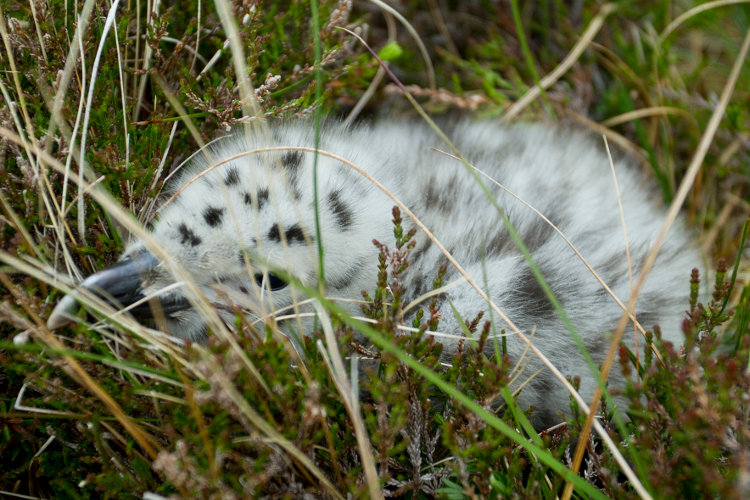
Exposed to the gales and the swells of the North Atlantic, this remote north-eastern outpost can be reached by ferry or helicopter when weather permits. With a population of just 52, people are far outnumbered by inquisitive sheep on this silent isle, where wildflowers cloak green pastures that end abruptly at cliffs that sweep down to crashing ocean.
Walking up to the heights of the northeast coast in quiet contemplation, you soon click into the gentle rhythm of life on the Faroes. Bird-watchers are in their element in summer, when you should watch your step so as not to tread on the fluffy young of black-backed gulls and the Eider duck eggs nestling in the mossy moorland. Kittiwakes, guillemots, oystercatchers, razorbills and great skuas can often be spotted wheeling overhead.
The one and only real sight in the main village is the church, dating to 1878, which harbours the headstone of the great Viking chief Svínoyar-Bjarni, mentioned in the Færeyinga Saga. Indeed centuries-old traditions have remained remarkably intact on Svínoy, and this valley – once used for peat-cutting – is still dotted with huts to wind dry mutton and pilot whale meat.
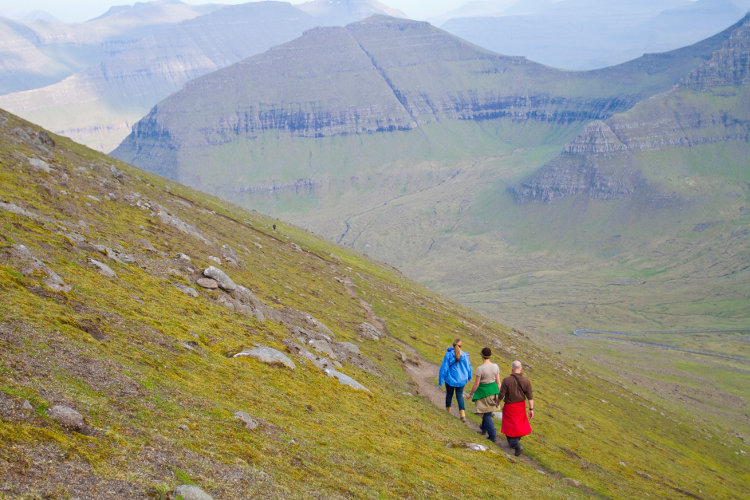
Riven with fjords to the east and bordered by a sound to the west, the Faroes’ second-largest island is mountainous and spectacular. Verdant meadows and hills roll to cone-shaped layer-cake mountains, the highest of which are frosted with snow in winter.
Hikers come for one of the Faroes’ star treks – the short but steep 2km ascent to 880m Slættaratindur, the tallest peak in the archipelago. Clamber up the grassy, cairn-dotted slopes from the car park at the highest point on the road that climbs to Eiði and you will reach the peak in around an hour. Brooding and mysterious in the silvery light of an overcast day and sublime when drenched in sunshine, the summit has arresting 360° views that take in a magnificent ripple of islands and glittering fjords. On cloudless days you can even glimpse Iceland, 350 miles distant. Slættaratindur means ‘flat summit’, a fact that has been noted by locals who claim the mountain is flat enough for chain dancing – the folkloric circle dance to medieval narrative ballads that has survived to this day.
This is a wonderful island for switching off from civilisation for a few days. A fine base for walkers is Gjógv, a cluster of brightly painted, turf-roofed houses snuggled at the foot of formidable cliffs and mountains, with a deep cleft forming a natural harbour. For a glimpse of the tallest rock stack in the Faroes, 188m-high Búgvin, hike over the hills to Ambadalur.
Búgvin may be the tallest but equally impressive are the mythical sea stacks of the so-called giant, Risin, and the witch, Kellingin. Legend has it that way back when the giants of Iceland gazed upon the Faroes with envy and sent Risin and Kellingin over to steal them. As the witch ascended the cliffs to pull them onto the giant’s back, however, the sun rose turning them both to stone. The 343m promontory of Eiðiskollur is the best vantage point.
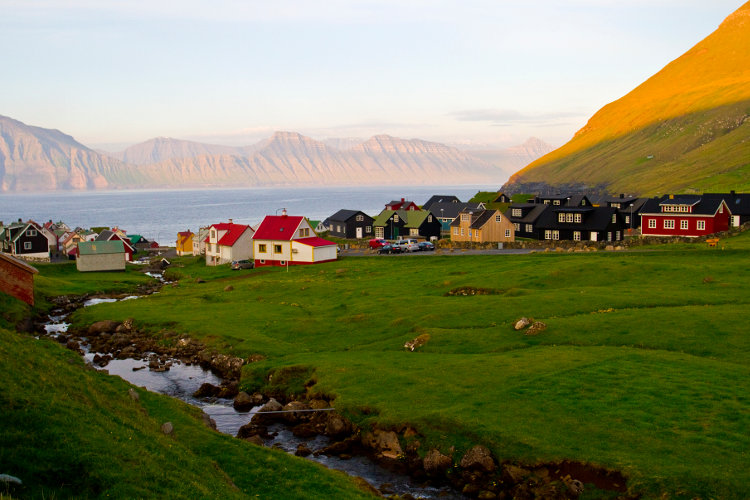
Battered by a fury of waves, the biggest of the Faroe Islands takes its name from the word streymur, which fittingly means ‘strong current in Faroese. An island of glistening sounds, plunging cliffs and landscapes denuded of trees and draped in a rich mantle of green, this is fabulous walking terrain. One of the finest hikes leads from the capital of the Faroes, Tórshavn, over to Kirkjubøur. The easy-going 7km, two-hour trek threads along a cairn-marked footpath, through pastures mown by sheep and up and over grassy fells. On cloudless days, the views of the rugged islets of Hestur (‘the horse’) and Koltur (‘the colt’) are nothing short of extraordinary.
Kirkjubøur reclines at the foot of rugged layer-cake mountains. Breathing in the briny air of the North Atlantic and gazing up at the eerie and imposing ruins of the roofless Gothic cathedral, St Magnus, you can almost imagine the day the Vikings first washed up on these shores in their longboats. This heritage has been meticulously preserved at turf-roofed Roykstovan, an 11th century farmhouse and former bishop’s residence, which is now run by 17th generation farmer Jóannes Patursson. The oldest part is open to visitors and catapults you back to the Middle Ages, its walls festooned with heirlooms from whale spears to busts, such as that of the Norwegian king Sverri.
For ornithologists, however, the main reason to linger on Streymoy is to take a boat along the sound to the Vestmanna bird cliffs and grottoes. Summer is primetime viewing and you can’t help but feel tiny in a boat bobbing below cliffs that rear 600m above bluer-than-blue waters. Puffins, razorbills, kittiwakes and guilllemots in their thousands keep eyes glued firmly to the cliffs and skies.
Atlantic Airways (atlantic.fo/en/) operate a twice-weekly service (every Monday and Thursday) between London Stansted and Vágar from June to late August. Return fares start at £230. They also operate the helicopter service, which is a quick and surprisingly affordable way of zipping between islands. For details on activities and events – the big one being the total solar eclipse on 20 March 2015 – go to Visit Faroe Islands (visitfaroeislands.com). Costs are roughly on a par with the rest of Scandinavia. Pack layers, waterproofs and sturdy shoes – you’re going to need them.